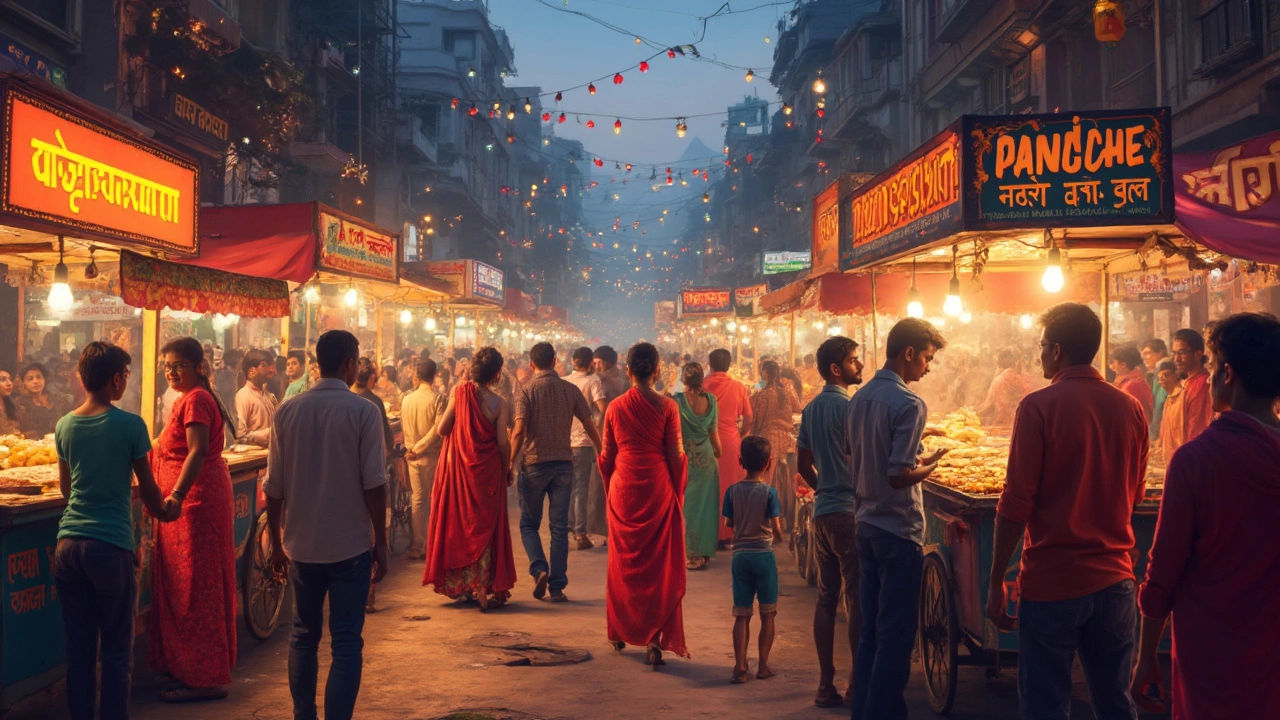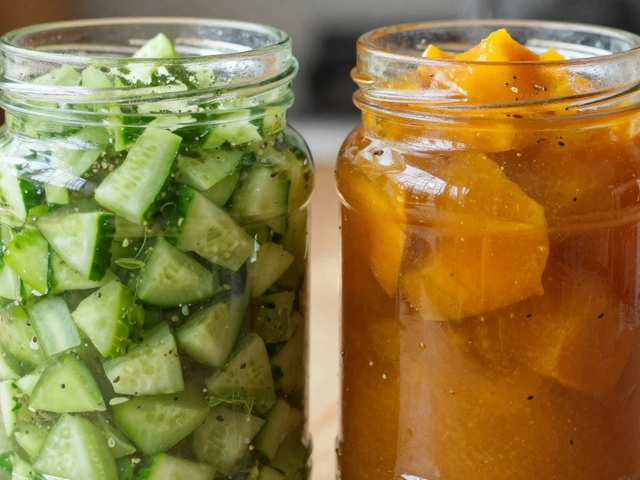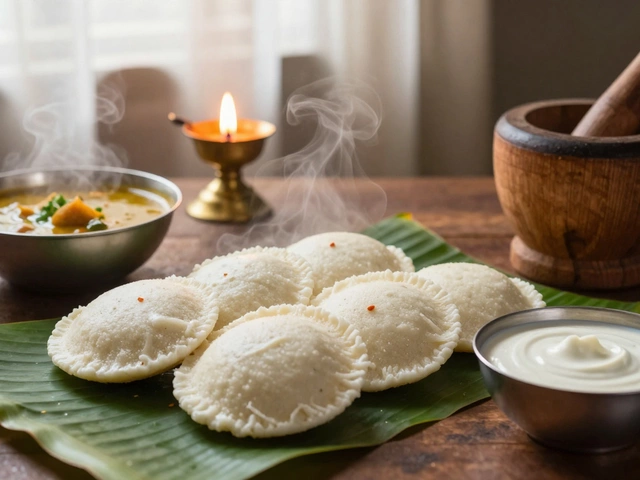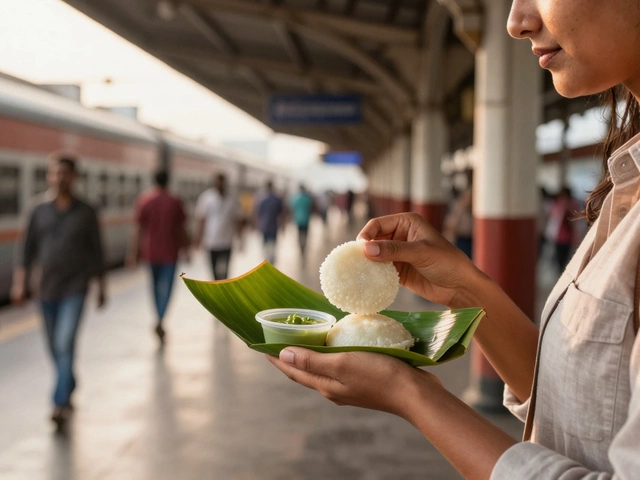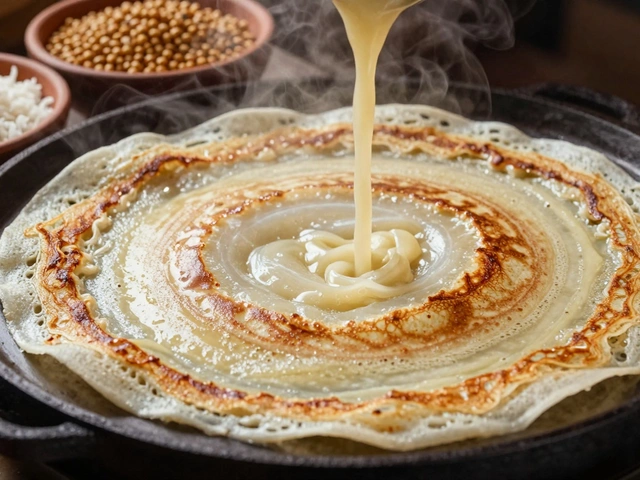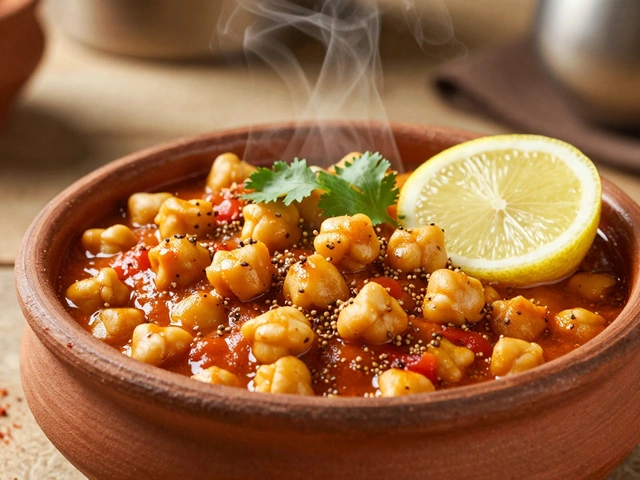Step onto a street corner in any big Indian city and you'll spot at least a few people crowded around a food cart or tiny shop, waiting for their favorite snack. It's hard to walk far in a busy market without catching the smell of frying samosas or hearing the crunch of vada pav in someone's hand. This isn't just about hunger—it's a craving, a habit, and, honestly, a bit of a social ritual.
Why has junk food grabbed India’s taste buds so tight? For most people, it's a mix of taste, price, and pure convenience. If you're out finishing chores or hanging with friends, nothing beats grabbing a plate of chaat or a couple of momos. It barely costs a thing, it's filling, and you don’t need to wait long. No wonder people across all age groups—kids racing home from school, office workers on a lunch break, and even grandparents—can be seen munching street eats.
- What counts as junk food in India?
- Why is junk food so popular?
- Top street junk foods everyone loves
- Trends and changes in eating habits
- Tips for enjoying Indian junk food safely
What counts as junk food in India?
When people talk about junk food India, they’re not just thinking about burgers and fries from global chains. Indian streets have their own lineup of quick, oily, high-calorie snacks that everyone loves. Local favorites like samosas, kachoris, vada pav, and pakoras are classic examples. These foods are usually deep-fried, packed with carbs, and heavy on spices. If it’s loaded with salt, oil, or sugar, and you can eat it without a proper sit-down meal, most Indians would call it junk food.
But it doesn’t stop at traditional snacks. Imported styles are huge too. Walk around a mall or a busy street and you’ll see pizza slices, cheesy sandwiches, and burgers with Indian flavors. Soda and sugary drinks go hand in hand with these foods. Stalls selling instant noodles or rolls stuffed with spicy fillings are everywhere, especially near schools and colleges.
Here’s a quick rundown of what most people in India consider junk food:
- Samosa, kachori, aloo tikki
- Pav bhaji, vada pav, misal pav
- Pani puri (golgappa), bhel puri, sev puri
- Noodels (like Maggi), Chinese-style fried rice/noodles
- Momos with spicy sauce
- Pizza, burgers, cheesy sandwiches
- Cold drinks, sodas, energy drinks
- Chips, fryums, and quick-pick packaged snacks
What really unites these Indian snacks isn’t just the taste but the fact they’re fast, loaded with flavor, and easy to grab on the go. The ingredients usually aren’t fresh veggies or healthy proteins. Most are fried, refined, and lacking much nutrition apart from quick energy.
You might be surprised to learn just how often these foods get eaten. Check this out:
| Frequency | Percentage |
|---|---|
| Daily | 24% |
| Several times a week | 36% |
| Once a week | 27% |
| Rarely | 13% |
So if you thought junk food was just about fast food chains, think again. In India, it’s a colorful mix of old favorites and new rage, lining every street corner and tempting nearly everyone.
Why is junk food so popular?
Junk food isn’t just a phase in India—it’s become a major part of what people eat every day. If you ask regular folks why they love junk food India style, the answers stay pretty much the same: it’s crazy tasty, cheap, and fits perfectly into busy lives. No need for table service or hours in the kitchen—you grab, eat, and go. This mix of convenience and flavor is impossible to ignore, especially in cities where everyone’s on the move.
Cost is a big driver. Most street Indian snacks and fast foods cost less than a coffee at a café. A plate of bhel puri? Under ₹40 in many places. A vada pav at a Mumbai stall? It's pocket change. For students and workers, getting full without spending much is a huge win.
But it’s not just about the money. Street fast food is super social. Friends hang out over samosas or chaat, and office groups bond over plates of pav bhaji. Families out for shopping often grab golgappa for some fun. Food carts and small shops become meeting points in every neighborhood. Grabbing these bites is woven into daily routines.
Another big reason: variety. Indian market streets offer something for every mood—from spicy momos to sweet jalebis and fiery Manchurian to classic pakoda. Most stalls will happily customize spice and toppings too. You always get something made right in front of you just the way you like it.
Here’s something that might surprise you: a 2023 survey by Food Industry India found that almost 45% of urban teens eat junk food three or more times a week. That says a lot about just how deeply these snacks are part of urban life.
| Age Group | % Eating Junk Food 3+ Times/Week |
|---|---|
| Teens | 45% |
| 20–35 | 38% |
| 35+ | 29% |
Big global brands like McDonald’s and Domino’s have also made things interesting. They adapt their menus for Indian tastes, and people love this mix of familiar and new. The real winning recipe? Add local spices and ingredients to classic fast food—paneer burgers, tandoori pizzas, and spicy fries.
Put it all together and you see why junk food isn’t just surviving here. It’s thriving because it’s affordable, social, and always ready to match your taste buds and your schedule.
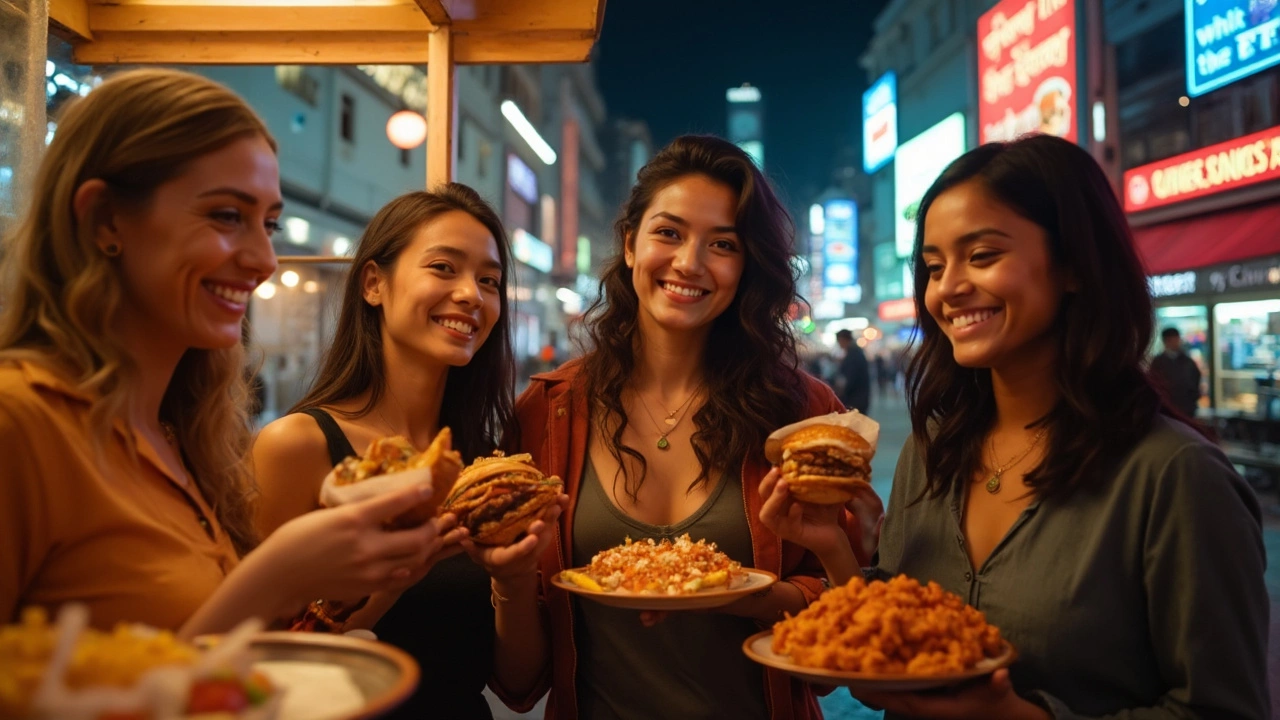
Top street junk foods everyone loves
If you spend any time in India, it’s impossible to miss the street food stalls, each with its own loyal crowd. When folks talk about junk food India, they really mean the snacks you find on busy roadsides or near college gates.
Let’s break down what’s topping the list in cities and small towns right now:
- Pani Puri: Called golgappa in Delhi and puchka in Kolkata, these crunchy balls filled with spicy water are everywhere. Kids and adults alike challenge each other to see who can eat the most.
- Samosa: Deep-fried dough stuffed with spicy potatoes, sometimes peas or lentils, and always served with chutney. Each region tweaks the filling, but everyone loves them piping hot.
- Vada Pav: Imagine a potato patty, spiced to perfection, tucked in a bun with chutneys. Mumbai’s answer to the burger, and street stalls sell hundreds every day.
- Momos: These steamed or fried dumplings are especially huge in North-East India and cities like Delhi and Bangalore. They come stuffed with veggies, chicken, or paneer.
- Pav Bhaji: A thick vegetable curry scooped up with buttered bread, this one’s famous on Mumbai’s beaches, but it pops up anywhere people want a savory, buttery snack.
- Chaat: This isn’t one food, but a mix of crunchy noodles, potatoes, yogurt, chutneys, and spices. Every city throws its twist on chaat—dahi puri in Mumbai tastes different from aloo chaat in Lucknow.
- Chole Bhature: Especially in North India, these soft, puffy breads with spicy chickpeas draw morning crowds outside local joints.
- Kathi Rolls: Originating in Kolkata, these are rolls full of spiced meat or veggies wrapped in flaky paratha—easy to hold, easy to munch.
Some cities see special trends. For example, Ahmedabad is making waves with cheesy fusion snacks, while Hyderabad's Irani cafes are famous for their spicy samosas and sweet buns. Smaller towns often focus on local specialties—think mirchi bajji (stuffed fried chili) in the south or litti chokha in Bihar.
To give you a sense of just how massive the street food scene is, here's a quick look at some sales figures from 2024:
| Snack | Estimated Daily Sales (Major Cities) |
|---|---|
| Pani Puri | 5 million plates |
| Samosa | 3.2 million pieces |
| Momos | 2.7 million servings |
| Pav Bhaji | 1.4 million plates |
People return to these Indian snacks not just for taste, but because they’re quick, cheap, and found on almost every street. The top picks change a little by region and season, but these classics never lose their shine or their fans.
Trends and changes in eating habits
The pace of life in India has sped up, and so have eating habits. With more folks moving to cities and schedules getting tighter, junk food India trends are changing fast. People aren't just grabbing a samosa during festival season anymore—it's a year-round thing now, and street food is almost part of daily life, especially for younger people and students.
A major shift happened as international fast-food chains set up shop everywhere, from Mumbai to small towns like Meerut. You can spot a McDonald's or Domino's almost anywhere now, and they’re changing up the game by 'Indianizing' menus with spicy fries and paneer burgers. Still, the good old street Indian snacks like pav bhaji and pani puri haven’t lost their charm—they’ve just started to share the spotlight with pizzas and wraps.
The COVID-19 pandemic did shake things up. For a while, crowds at street food stalls thinned out. People became picky about hygiene and started leaning toward food delivery apps like Swiggy and Zomato. Even classic street vendors hopped on these apps, offering samosas and momos for home delivery. Now, you’ve got options: hit the street, or get that junk food fix in your pajamas at home. Check out the changes in habits from 2017 to 2024:
| Year | On-street Eating | Online Food Orders | Health-conscious Choices |
|---|---|---|---|
| 2017 | 75% | 10% | 12% |
| 2020 | 45% | 36% | 20% |
| 2024 | 60% | 30% | 25% |
The last few years have also seen a sudden craze for 'healthier' street food—think baked samosas, air-fried tikkis, and veggie-loaded wraps. Nobody is ditching the classics, but more stalls now offer less oily versions to fit changing tastes. There’s even a market for sugar-free sweets or vegan dosas popping up in cities like Bangalore and Pune.
One thing’s for sure: the demand for fast food isn’t dropping. It's just getting smarter and sometimes a bit healthier. Even college canteens and office cafeterias are spicing up the menu with local Indian snacks and adding new twists every season. The only constant? People in India will always make room (and time) for their favorite junk food.
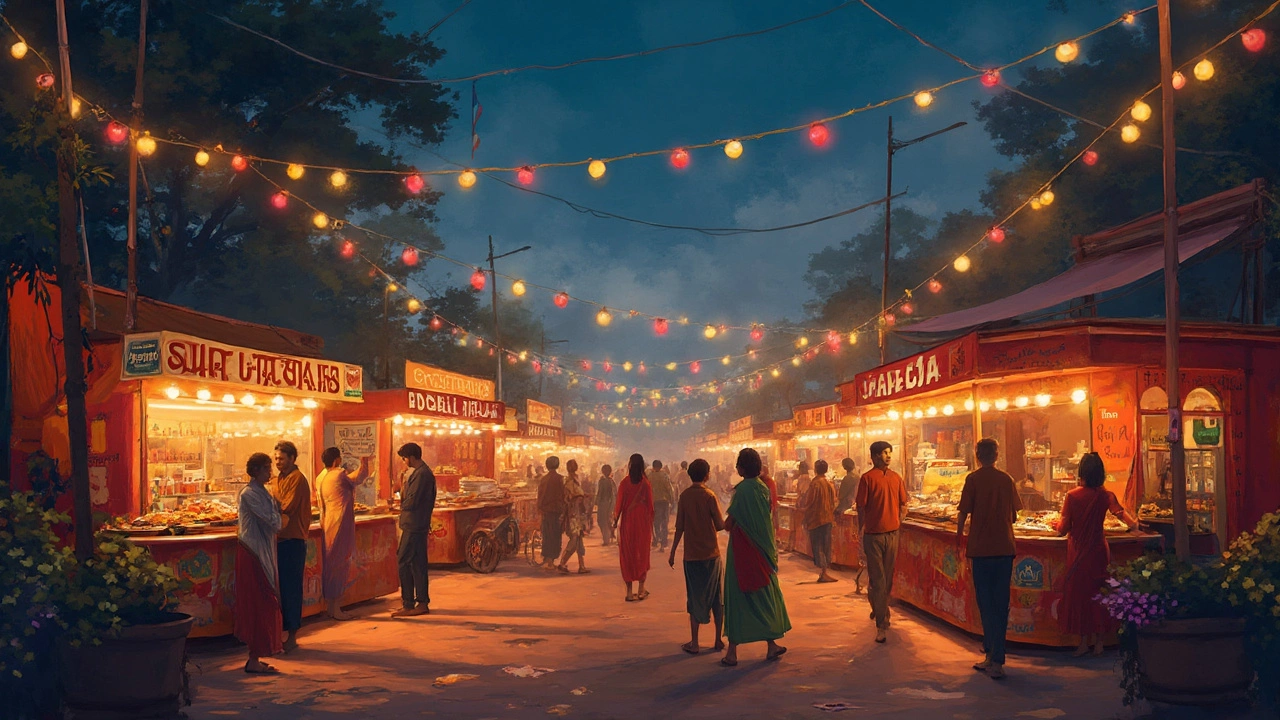
Tips for Enjoying Indian Junk Food Safely
If you're set on trying junk food in India, a little extra care goes a long way. Not all street food is equal—some stalls really nail hygiene, while others can be risky for your stomach. Knowing a few basic tips can save you from those not-so-fun food poisoning stories.
- Watch for crowds: Busy stalls usually mean the food moves fast and doesn’t sit out long enough to go bad. If the locals are lining up for pani puri or samosas, you’re in safer hands.
- Check for cleanliness: Glance around. Is the vendor handling money and food with the same hand? Are the utensils and toppings covered? If things look sketchy, skip it.
- Ask for fresh: Indians love snacks that are hot and made to order. Fried stuff should actually sizzle, not just sit in a pile looking cold and soggy. If you’re unsure, ask them to make it fresh.
- Go easy on water-based items: Dishes like golgappa (pani puri) use flavored water. Stick to stalls with filtered water or ask for dry versions, just to be safe—water is often the culprit behind stomach bugs.
- Start slow: If you’re not used to Indian spices or street food, don’t try everything at once. Start with mild snacks and slowly see what works for you.
- Use hand sanitizer: Street food means eating with your hands. Keep a pocket sanitizer ready—no one likes food memories turned into food regrets.
Quick look at foodborne illness rates in India gives you an idea why these precautions matter:
| Year | Reported Foodborne Illness Cases |
|---|---|
| 2022 | ~12,000 |
| 2023 | ~15,800 |
Getting the most out of street food or fast food in India doesn’t mean risking your health. With just a few easy steps, you get all the fun—none of the hospital bills. So next time you spot a vada pav or pav bhaji vendor, remember these tips and enjoy munching with a little more confidence.
